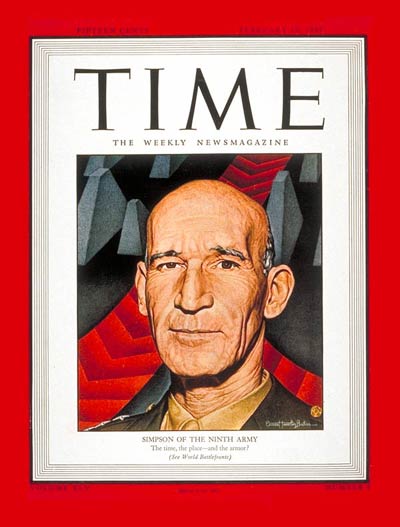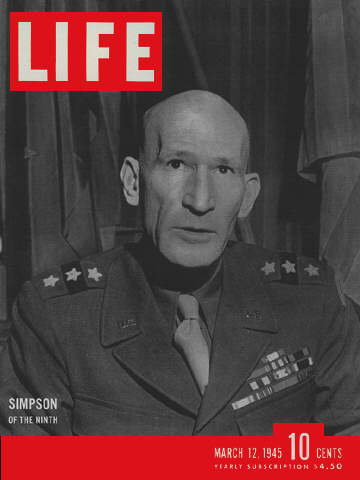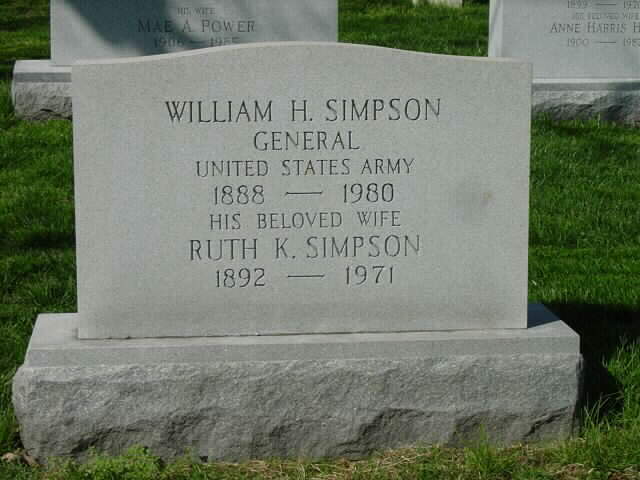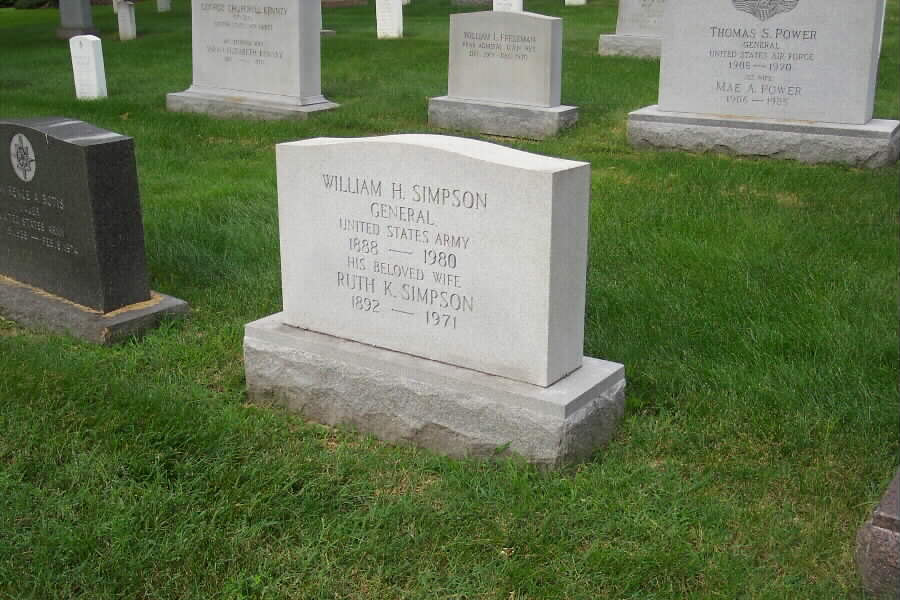Tall, completely bald, with a profile often compared to that of weathered Indian Chief, “Big Simp” was an impressive leader of troops. Born May 18, 1888, at Weatherford, Texas, he graduated from the United States Military Academy in 1909, and commisioned in the Infantry.
After few months at Fort Lincoln, North Dakota, he served two years, 1910-12, in the Philippines with the 6th United States Infantry. From 1912-1914 he was at Presidio, San Francisco, after which was ordered to duty in Texas.
In 1916 he took part in the Mexican Punititive Expedition under Pershing. Promoted to Captain in May 1917, he served with the 33rd Division through World War I, receiving temporary promotions to Major and Lieutenant Colonel, advancing to divisional Chief-of-Staff.
After occupation duty he became in May 1919 Chief-of-Staff f the 6th Division at Camp Grant, Illiois. In June 1920 he rverted to Captain and then was promoted to Major. After two years in War Department he entered the Infantry School, Fort Benning, Georgia, from which he graduated in 1924. A year later he graduated from the Command and General Staff School, Fort Leavenworth, Kansas, and after two years commanding battalion of 12th Infantry in Maryland he entered the Army War College, graduating in 1928.
Simpson served with the General Staff until 1932 and taught military science and tactics at Pomona College, California, from 1932 to 1936. Promoted to Lieutenant Colonel in October 1934, he was advanced to Colonel in September 1938 while an instructor, 1936-40, at Army War College.
During August-September 1940 commanded the 9th Infantry at Fort Sam Houston, Texas. he was promoted to temporary Brigadier General in October, and became Assistant Commander of the 2nd Division there. From April to October 1941 he commanded Camp Wolters, Texas, receiving promotion to temporary Major General in September and in October took command of the 35th Division, taking it from Camp Robinson, Arkansas, to a training site in California shortly before U.S. entry into World War II.
During May-July 1942 he commanded the 30th Division at Fort Jackson, South Carolina. In September he took command of newly activated XII Corps at that base. In October 1943, he was promoted to temporary Lieutenant General and took command of the 4th Army at San Jose, California, and moved with it to Fort Sam Houston, Texas, Jan 1944. In May he and most of his staff went to England to organize the 8th Army, which a few days later was redesignated 9th. The 9th became operational as part of Omar N. Bradley’s 12th Army Group, September 5 at Brest, France, which was liberated on September 20. After month in Ardennes Forest the army was moved north, and in November it broke through Sigfried Line and advanced in some of heaviest fighting of war to the Roer River (9th was for short periods attached to Field Marshal Montgomery’s 21st Army Group). The Rhine was crossed on March 24, 1945, north of Ruhr industrial area, on April 19th made contact with Courtney H. Hodges’ 1st Army, making complete encirclement of the Ruhr. The 9th was the first U.S. army across the Elbe, April 12.
After brief occupation duty, he returned to the U.S. in June. He undertook mission to China a month later and in October took command of the 2nd Army at Memphis, Tennessee. He retained that command, and transfered to Baltimore, Maryland, June 1946, until he retired in November 1946. In July 1954 he was promoted to General on the retired list. May 19, 1888-Aug 15, 1980.
William Hood Simpson, General, United States Army, was born in 1880 and died in 1980. He was a combat commander during World War II. He is buried in Section 30 of Arlington National Cemetrey. His wife, Ruth K. Simpson (1892-1971) is buried with him.



Michael Robert Patterson was born in Arlington and is the son of a former officer of the US Army. So it was no wonder that sooner or later his interests drew him to American history and especially to American military history. Many of his articles can be found on renowned portals like the New York Times, Washingtonpost or Wikipedia.
Reviewed by: Michael Howard

